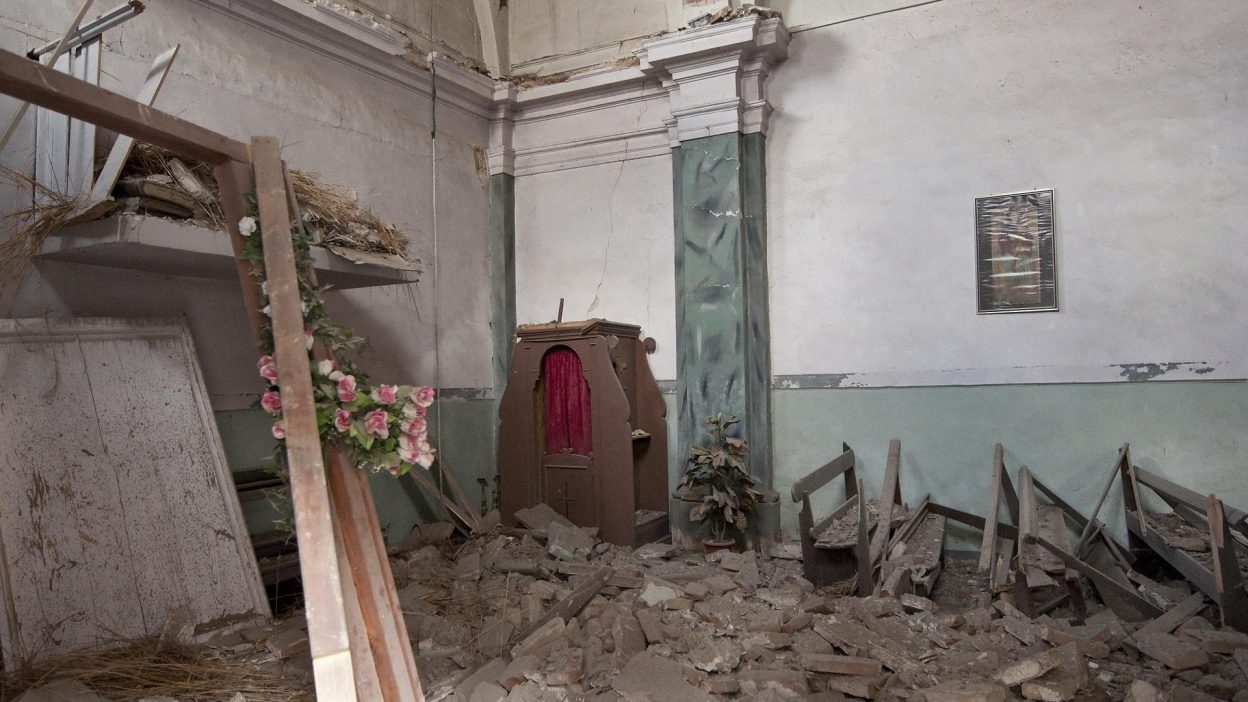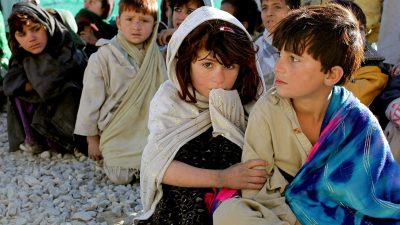Unveiling The Untold Devastation And Its Lasting Impact On Iran And Turkmenistan
The 1929 Kopet Dag Earthquake struck with ferocity, its tremors felt across both Iran and Turkmenistan. Situated in the seismically active region of the Kopet Dag mountain range, this catastrophic event brought widespread devastation. Not only did the earthquake leave a trail of destruction, but it also had a profound impact on the affected countries’ economies, infrastructures, and communities. The severity of the earthquake and its long-term effects are often understated in historical accounts, making it a significant yet underexplored event in seismic history.
The tremors from the earthquake triggered landslides and collapsing structures, leaving thousands homeless and causing widespread panic. In both rural and urban areas, the quake levelled buildings, disrupted communications, and severely damaged vital infrastructure. As a result, the recovery process was slow and arduous, with survivors facing a new challenge: rebuilding from the rubble. The immediate aftermath required not only aid and resources but also strategic planning to restore basic services to the affected regions.
The Untold Truth Behind the 1929 Kopet Dag Earthquake Disaster
- Scale of Destruction: The true extent of the damage caused by the 1929 Kopet Dag Earthquake is not often fully acknowledged. Entire villages were wiped out, with buildings reduced to rubble in a matter of seconds. This level of destruction left communities isolated, struggling to survive amid the aftermath. Reports suggest that the quake was felt in regions far beyond the immediate epicentre, amplifying its impact.
- Underreported Casualties: Official figures regarding the death toll from the 1929 Kopet Dag Earthquake vary, but many argue that the actual number of casualties may have been higher than reported. Given the poor infrastructure and the difficulty in reaching remote areas, the true cost of human lives may never have been fully documented. Moreover, many survivors faced long-term suffering from injuries, disease, and displacement.
When the Ground Cracked: What the 1929 Kopet Dag Earthquake Really Cost Us
The 1929 Kopet Dag Earthquake wasn’t just a physical disaster—it was an economic one. The immediate destruction of homes, businesses, and critical infrastructure severely hampered trade and everyday activities. The quake disrupted both local and regional economies, affecting agriculture, transportation, and industrial output. With entire towns flattened, the cost of rebuilding was astronomical, further burdening the already struggling nations.
On a human level, the psychological and emotional toll on survivors was immense. In addition to the loss of life, many families faced the trauma of losing their homes and livelihoods. The long recovery process left scars on the affected communities, as people rebuilt not only their physical surroundings but also their sense of security and hope for the future.
Shattering Lives: The Hidden Consequences of the 1929 Kopet Dag Earthquake
The 1929 earthquake brought with it long-term consequences that went far beyond the immediate destruction. While the physical damage was apparent, the social and cultural ramifications were far-reaching. For instance, many local traditions and ways of life were lost or severely altered due to the devastation of the earthquake. The destruction of cultural landmarks and heritage sites meant that generations would grow up without access to their cultural roots.
Furthermore, the trauma faced by survivors resulted in lasting psychological effects. Entire communities struggled to rebuild, with the loss of loved ones and the destruction of familiar landscapes leaving a deep emotional scar. The mental health impact, often overlooked in such crises, persisted long after the physical reconstruction had begun.
Why the 1929 Kopet Dag Earthquake Was More Destructive Than We Thought
While the 1929 Kopet Dag Earthquake is often remembered for its immediate devastation, the long-term effects proved even more destructive. The earthquake exposed the vulnerability of both Iran and Turkmenistan’s infrastructure, with many buildings and roads being poorly constructed and ill-prepared for such a massive seismic event. In particular, the lack of reinforced buildings made it easier for structures to collapse, contributing to the high casualty rates.
Additionally, the earthquake’s impact on agriculture and trade caused economic ripple effects that would last for decades. The region’s dependence on traditional farming methods meant that a single disaster could wipe out crops, leaving many without food or income. The failure to address these vulnerabilities in the aftermath only deepened the effects of the earthquake.
The Aftermath of the 1929 Kopet Dag Earthquake: Was Our Response Enough?
- Preparedness Levels: The response to the 1929 Kopet Dag Earthquake revealed a major lack of preparedness. Both Iran and Turkmenistan were not equipped to handle such a large-scale disaster, which made recovery efforts even more difficult. While aid did eventually arrive, it was often too late or insufficient to meet the overwhelming needs of the survivors.
- International Aid: Despite the scale of the disaster, international aid was minimal. With both countries struggling economically, the affected regions had to rely primarily on local resources for recovery. This lack of international response further delayed recovery, highlighting the need for improved disaster preparedness and global cooperation in future seismic events.
Could We Have Prevented the 1929 Kopet Dag Earthquake? The Shocking Facts
While it is impossible to prevent earthquakes, there were certainly missed opportunities in terms of preparedness. Advances in seismic monitoring and prediction were in their infancy at the time, but the earthquake could have been mitigated if proper building codes had been implemented. The lack of understanding of seismic risk in this region left populations vulnerable, and the absence of effective early warning systems meant that many were caught off guard.
Moreover, the failure to address structural weaknesses in key infrastructure, particularly in densely populated areas, contributed significantly to the disaster’s scale. A more proactive approach in terms of building practices and urban planning could have reduced the impact of the quake and saved many lives.
When Earthquake Strikes: How the 1929 Kopet Dag Earthquake Revealed Our Vulnerabilities
The 1929 earthquake exposed a number of vulnerabilities within the affected countries, not just in terms of infrastructure but also in terms of social resilience. Many communities were ill-prepared for the social and psychological toll of such a disaster. With a lack of mental health support and emergency services, survivors found it difficult to cope with the devastation.
Additionally, the disruption to local economies revealed the fragility of rural livelihoods, which were highly dependent on agricultural outputs. Without robust safety nets, many people were left without the means to survive after the earthquake. This highlighted the need for more comprehensive disaster preparedness plans, both at a local and national level.
The 1929 Kopet Dag Earthquake: What the Media Didn’t Tell You
The media coverage of the 1929 Kopet Dag Earthquake was sparse and often incomplete. While some international news outlets reported on the disaster, the full scale of the destruction was not widely acknowledged. The political and economic climate at the time may have played a role in suppressing information about the true extent of the damage.
Additionally, media coverage often glossed over the long-term effects of the earthquake, focusing instead on the immediate aftermath. The trauma faced by survivors, the destruction of cultural landmarks, and the delayed recovery efforts were not adequately reported, leaving a gap in the historical record.
The Lasting Legacy of the 1929 Kopet Dag Earthquake: Have We Learned Enough?
The 1929 Kopet Dag Earthquake remains a tragic reminder of the devastating power of nature and the vulnerabilities we face in its wake. While there have been advances in earthquake preparedness since then, the lessons learned from this disaster have not been fully implemented in many parts of the world. As we continue to face seismic risks, it is crucial that we remember the Kopet Dag Earthquake’s legacy and use it to inform future disaster management strategies.
5 Short FAQs
- What caused the 1929 Kopet Dag Earthquake?
The 1929 Kopet Dag Earthquake was caused by tectonic shifts along the Kopet Dag mountain range, a seismically active region known for frequent earthquakes. - How many people were affected by the 1929 Kopet Dag Earthquake?
The earthquake resulted in thousands of deaths and left countless others displaced, with many communities severely affected by the destruction. - What were the main long-term consequences of the disaster?
Beyond the immediate devastation, the earthquake caused lasting economic and psychological impacts, with communities struggling to rebuild for years. - Was there adequate disaster response following the 1929 Kopet Dag Earthquake?
The response was insufficient due to a lack of preparedness and limited international aid, which delayed recovery efforts and prolonged the suffering of survivors. - How did the 1929 Kopet Dag Earthquake change earthquake preparedness in the region?
The disaster highlighted the need for stronger building codes, better emergency services, and more proactive disaster management, paving the way for improved future preparedness.
References:
1929 Kopet Dag Earthquake – Wikipedia
https://en.wikipedia.org/wiki/1929_Kopet_Dag_earthquake
Seismicity and Structure of the Kopet Dagh (Iran, U.S.S.R.) – Philosophical Transactions of the Royal Society A
https://royalsocietypublishing.org/doi/10.1098/rsta.1975.0019
1929 Kopet Dag Earthquake – Wikiwand
Kopet Dag – Wikipedia
https://en.wikipedia.org/wiki/Kopet_Dag?
M 7.2 – 40 km SSE of Baharly, Turkmenistan – Earthquake Hazards Program – USGS
https://earthquake.usgs.gov/earthquakes/eventpage/iscgem908052/region-info?




